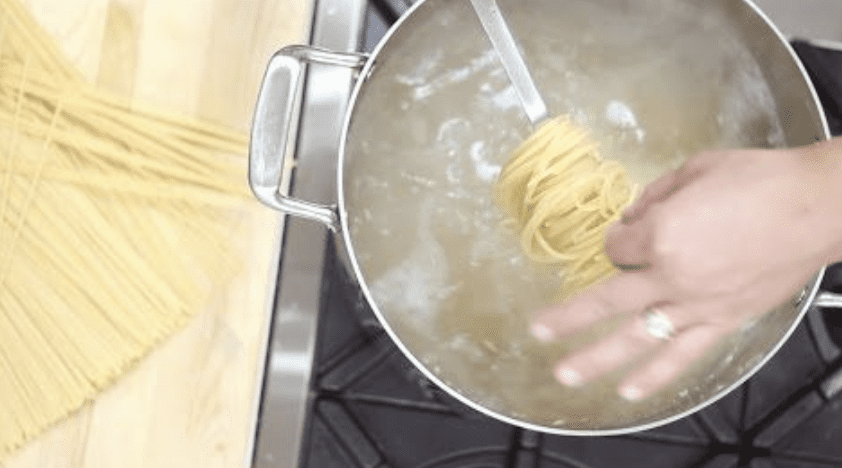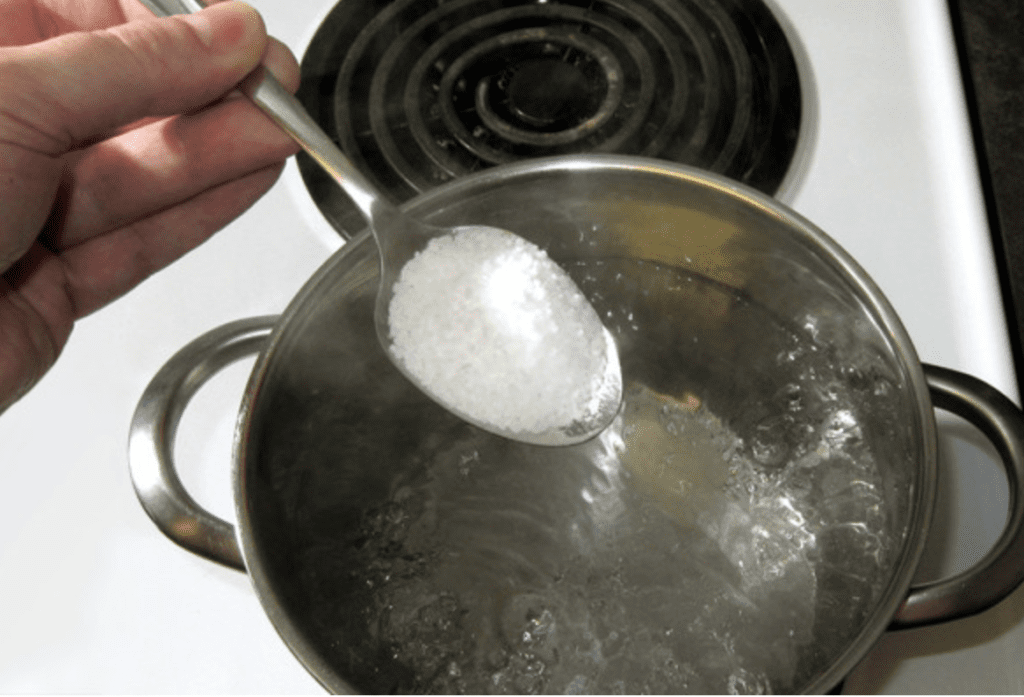Cooking Pasta 101


Cooking Pasta 101
Cooking pasta seems simple, but perfect pasta takes some finesse that can be learned in any Cooking Pasta 101 class.
Cooking Pasta 101 – Use a Large Pot
Pick a pot that gives the pasta plenty of space to move around in – an 8 or 12 quart stockpot is a good choice.
Use Plenty of Water
To prevent sticking, use 4 quarts of water to cook up to 1 pound dried pasta. Pasta leaches starch as it cooks; without plenty of water to dilute it, the starch will coat the noodles and they will stick. Use a pot with at least a 6-quart capacity so that the water won’t boil over.
Salt the Water
Adding salt to the pasta cooking water is essential; it seasons and adds flavor to the pasta. Add 1 table spoon of salt per 4 quarts of water. Be sure to add the salt with the pasta, not before, so it will dissolve and not stain the pot.
Skip the Oil
It’s a myth that adding oil to pasta cooking water prevents the pasta from sticking together as it cooks. Adding oil to cooking water just creates a slick on the surface of the water, doing nothing for the pasta. And when you drain the pasta, the oil prevents the pasta sauce from adhering. To prevent pasta from sticking, simply stir the pasta for a minute or two when you add it to the boiling water, then stir occasionally while it’s cooking.
Wait for a Rigorous Boil
Don’t dump in the pasta when the water is at a mere simmer. You want a vigorous boil. Remember, the pasta is going to cool down the temperature of the water once you drop it in. To bring the water back up to a boil more quickly, put the lid back on.
Stir to keep the pasta from sticking
Stand guard and stir the pot at least two or three times during cooking.
Don’t let the strands clump. They should swirl, unencumbered and free.
Cooking Pasta 101 – Is it Done
The timing instructions given on the box or package are almost always too long and will result in mushy, over cooked pasta. Tasting is the best way to check for doneness. Typically pasta should be cooked al dente, when it still has a little bite left in the center. Test the pasta two minutes before the suggested cook time.
Reserve Some Water
Reserve about ½ cup cooking water before draining the pasta-the water is flavorful and can help loosen a thick sauce. This starchy water can work wonders in sauces, to either bind the sauce and pasta together, or to thin down thicker sauces so they’ll coat the noodles.
Don’t Rinse
Drain the pasta in a colander, but don’t rinse the PaSta; it washes away starch and makes the pasta taSte watery.
Do let a little cooking water cling to the cooked pasta to help the sauce adhere.
Keep it Hot
Drain, toss with sauce, and serve hot.
Place a colander in the kitchen sink and drain your pasta. Put the drained pasta back into the pot with sauce (or into the saucepan if the sauce is still cooking and the pan is large enough), add your pasta water, and toss to evenly coat. Serve piping hot.
Cooking Pasta 101 – Pasta Perfection Tips
Cooking times can vary according to pasta shape, amount, and type (whole-wheat, gluten-free, etc.). Use the suggested cooking time on the package as a suggestion, not gospel.
Unlike dried pasta, fresh pasta takes only two or three minutes to cook, max. It’s trickier to cook than dried, so save it until you’ve got dried down.
Stuffed pasta, like ravioli, will rise to the surface and float when ready.
Don’t add oil to the pasta water. Some cooks are under the false assumption that a glug of olive oil will keep the strands from clumping. But that’s nothing a good stir won’t solve, plus oil could leave your pasta too slick for the sauce to cling.
Don’t rinse your pasta when it’s done cooking. That washes away all the happy starches that bind it to the sauce.
More on How to Cook Pasta 101 >>



